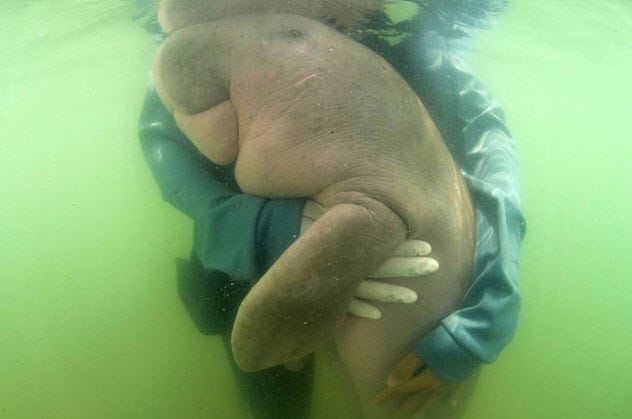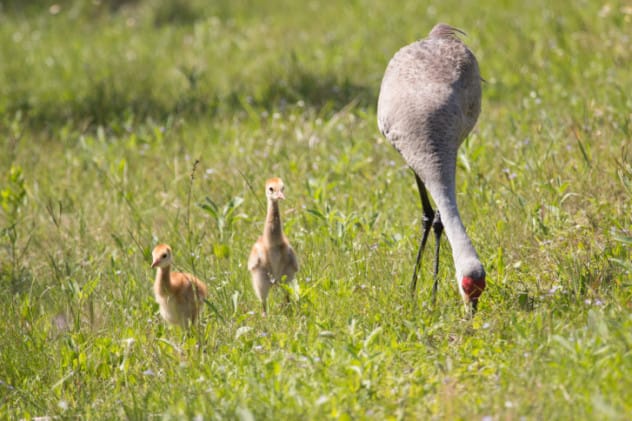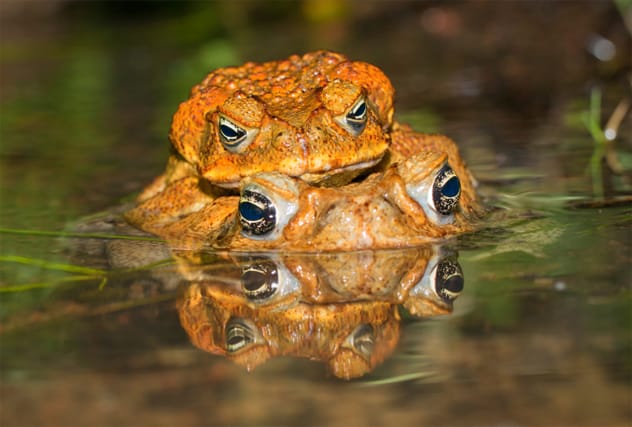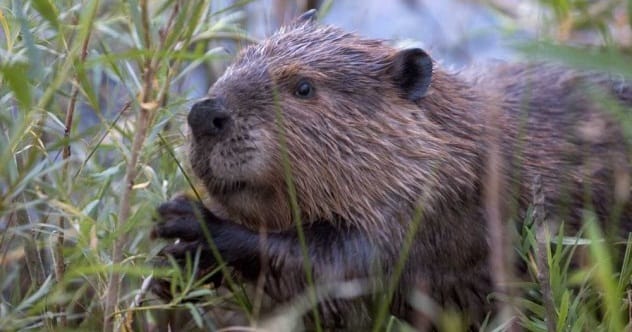When we think about saving animals, images of dedicated scientists tracking creatures through the wilderness often come to mind. But sometimes, the challenges are so unique, the solutions have to be downright weird! Get ready to explore some of the most unconventional, imaginative, and surprisingly successful wildlife conservation strategies ever devised. These stories prove that a little out-of-the-box thinking can go a long way in protecting our planet’s precious biodiversity.
Panda Survival School: Tough Love for Teddies
Giant pandas are adorable, but raising them in captivity and then releasing them into the wild isn’t always a storybook ending. For instance, Xiang Xiang, a captive-bred panda, sadly didn’t survive a year after his release. To prevent more heartbreak, scientists developed what could be called a ‘panda boot camp.’ At the Wolong Nature Preserve, a young panda named Tao Tao received essential survival training, not just from his mother in skills like climbing, but also from human intervention.
To prepare him for real-world dangers such as storms, mudslides, and predators, scientists put Tao Tao through rigorous drills. The most ingenious part? Caretakers only interacted with him while wearing full panda costumes, scented with panda smells, ensuring he wouldn’t become accustomed to humans. Tao Tao was released into the wild in 2012 and a health check in 2017 confirmed he was thriving. This panda survival school now prepares several cubs each year, equipping them to confidently face the wild.

Robo-Guardian vs. Lionfish Invaders
Imagine an underwater vacuum cleaner, but instead of dust, it targets invasive lionfish! That’s essentially the ‘Guardian,’ a marine robot designed by the creators of Roomba. Lionfish, with their venomous spines, pose a major threat in areas like the Bahamas, consuming native species at an alarming rate while having no natural predators. Traditional fishing methods also prove ineffective against them.
The Guardian is engineered to dive as deep as 500 feet, where it stuns lionfish with a mild electric pulse and then gently sucks them into a holding tube for retrieval. Currently, it requires remote human operation to prevent accidental zapping of other marine life. However, future iterations are envisioned to autonomously identify and target lionfish with remarkable precision, much like a sci-fi hero.
Sky-High Surveillance for Shy Dugongs
Dugongs, the gentle eastern cousins of manatees, play a vital role in the coastal ecosystems of the Indian and Western Pacific Oceans. These shy creatures are notoriously difficult to monitor using traditional methods. Previously, aerial surveys via seaplanes were the go-to, but such flights are costly, dangerous, and logistically challenging, especially over remote ocean expanses.
Scientists have now turned to drones for a more eco-friendly and accurate solution. Launched from small boats, these drones capture thousands of images during a single flight. These images are then analyzed by a sophisticated dugong-spotting algorithm, which boasts an accuracy rate of around 70%. This technology allows researchers to create population density maps for this vulnerable species within days, offering a significant leap in efficiency and data collection. It’s certainly a more productive use of drone tech than some hobbies!

Undercover Crane Operations
If you want to raise a crane, you might need to become one! This is the philosophy behind innovative breeding programs for whooping cranes. When raised by humans, these birds can imprint on their caregivers, leading to an identity crisis during mating season where they might view humans as potential partners. The ingenious solution? Fool the cranes into thinking their human caretakers are also cranes.
Whooping cranes are North America’s tallest birds, so humans are already somewhat to scale. To complete the disguise, caretakers don head-to-toe white coverings and use a crane head puppet on one arm. Human noises are minimized around the chicks, and crane calls are played to familiarize them with their own species’ sounds. These dedicated efforts have been crucial in bringing the whooping crane back from the brink of extinction. From a mere 16 individuals in the 1940s, their population now exceeds 800, mostly living in the wild.

Robotic Fish to Scare Away Pests
Not all fish control problems require direct removal of invasive species. Sometimes, a little scare tactic is all that’s needed. Researchers at NYU adopted this approach by building a silicone robot designed to mimic a large-mouthed bass. Its mission? To intimidate mosquitofish, a small species initially introduced to control mosquito populations but has since become an ecological menace in many freshwater environments.
Early trials with this robotic scarecrow bass demonstrated its ability to induce stress in mosquitofish populations, even causing them to lose weight. Stress and weight loss reduce their reproductive success, thereby helping to control their numbers. The aim is to manage mosquitofish populations humanely, without mass culling, especially since the species is so widespread that large-scale removal could harm the broader ecosystem. While still in prototype stages, future versions of this robot could be deployed to patrol waters, spooking every mosquitofish they encounter.
The Great Muskox Railway Adventure
This remarkable conservation story harks back to the early days of American wildlife preservation. Muskoxen were common in parts of Alaska until the late 19th century, when over-hunting and climate change led to their local extinction. In the 1930s, the U.S. Congress decided this wasn’t right and funded a bold project to reintroduce muskoxen to Alaska. Thanks to this ambitious effort, Alaska’s muskox population now numbers over five thousand.
The journey was an epic one: 34 muskoxen were captured in Greenland by Norwegian sailors, shipped to Norway, then to New York City for a month’s quarantine. From there, the herd traveled by train to Seattle, then by steamship to Seward, Alaska, and another train to Fairbanks. After a five-year respite, they embarked on one final steamship voyage to Nunivak Island in the Bering Sea. Considering muskoxen are built for Arctic winters with their double-layered wool coats, this 8,000-mile journey must have been incredibly taxing. Yet, most of the original herd survived, and the Nunivak population today is around 600, having also helped establish other thriving herds on mainland Alaska.
Shocking Tactics: Electroejaculation for Posterity
Artificial insemination is a common tool in agriculture and conservation, but collecting samples isn’t always straightforward, especially with more aggressive animals. While horses or friendly bulls might cooperate with traditional methods, what about obtaining semen from a lion or a tiger? One rather electrifying solution is electroejaculation. This technique is often used on livestock when handlers prefer to keep a safe distance.
The method generally involves a rectal probe that delivers controlled electrical stimulation, causing muscle contractions that induce ejaculation. Early prototypes developed using domestic cats with simple tools like plastic tubes and copper wires have been adapted for larger animals such as Amur leopards and Siberian tigers. A notable success story comes from the Singapore Zoo, where a lion cub named Simba was conceived using semen collected via electroejaculation from an elderly lion, Mufasa. Tragically, Mufasa, at 20 years old, did not survive the procedure, but his lineage continues through Simba—a bittersweet victory.

The Kakapo Love Helmet: A Hopeless Romantic’s Tale
Meet Sirocco, a kakapo from New Zealand who has a bit of a human fixation. Kakapos are flightless, nocturnal parrots whose species nearly vanished but is now making a comeback thanks to intensive breeding efforts. Unfortunately, Sirocco was raised by humans and imprinted on his caretakers. This means he shows little interest in mating with other kakapos, but he has shown amorous intentions towards humans. A 2009 viral video famously captured him attempting to mate with zoologist Mark Carwardine’s head!
Sirocco’s peculiar affection for human heads led scientists to invent an “ejaculation helmet”—a rubber headpiece with dimples designed to collect semen. However, kākāpō mating can be a lengthy affair, sometimes lasting nearly an hour. Understandably, no one was quite up for wearing the helmet that long, so Sirocco remained celibate. Despite the helmet’s practical failure, Sirocco’s quirky story brought global attention to his species’ plight, making it a conservation win in its own right. The famous bird now lives on an island, occasionally visited by his human admirers, and his helmet is displayed in New Zealand’s national museum.
Toad-Ally Gross: Poisonous Sausages for Picky Eaters
Cane toads are infamous as one of the world’s most problematic invasive species. In Australia, these venomous amphibians are widely despised, partly due to their devastating impact on native wildlife. Animals like the quoll, a small marsupial, prey on cane toads but can be fatally poisoned by the toxins in their glands. Since cane toads seem irresistibly tasty to quolls, scientists devised a way to teach these marsupials to avoid them.
The method involves creating special cane toad sausages. Live toads are humanely euthanized by freezing, then skinned and minced—a notoriously smelly process. A chemical called Thibenzole, which induces nausea in animals, is added to the toad mince. These tainted toad sausages are then air-dropped into quoll habitats. While initial results after the first drop in 2018 were mixed, the sausage strategy appears to be successfully conditioning quolls to develop an aversion to cane toads, helping protect them from this toxic prey.

Beavers Take to the Skies: Operation Parachute Drop
After World War II, an influx of people began settling near Payette Lake, Idaho, an area long inhabited by beavers. Predictably, conflicts arose as the industrious beavers’ activities started damaging human infrastructure like irrigation systems and orchards. Since relocating the people wasn’t an option, authorities had to find a way to move the beavers. Idaho’s mountainous terrain made traditional relocation by horse and truck both costly and risky for the beavers, who don’t tolerate heat or long periods out of water well.
The ingenious solution involved military planes and surplus parachutes. Wildlife managers experimented to develop a special box sturdy enough to hold a beaver and designed to open gently upon landing. The initial tests were conducted with an old beaver affectionately named Geronimo, who was repeatedly dropped from a plane in the parachute box until scientists were confident in its safety. Geronimo was then rewarded with a prime spot on the first official relocation flight, accompanied by three female beavers. In total, 76 beavers were successfully transplanted into the Idaho wilderness using this method, with only one unfortunate casualty due to a premature box opening.

These ten stories highlight the incredible ingenuity and dedication of conservationists worldwide. While some methods may seem straight out of a cartoon, their success speaks volumes. Protecting our planet’s wildlife often requires us to think creatively, adapt to unique challenges, and sometimes, to embrace the wonderfully weird. The future of many species depends on such an innovative spirit.
Which of these bizarre conservation strategies surprised you the most? Or do you know of any other unusual wildlife-saving efforts? Share your thoughts in the comments below!










